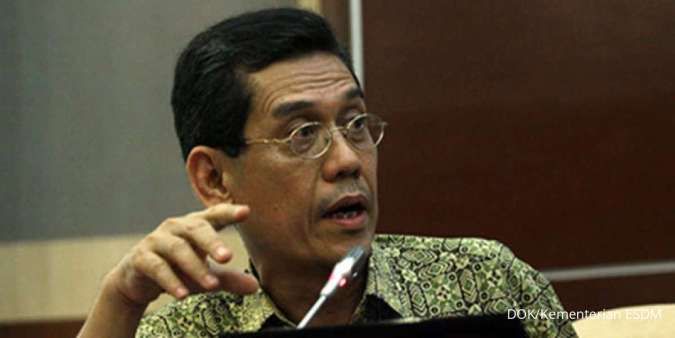KONTAN.CO.ID - WASHINGTON. The U.S. economy likely slowed further in the third quarter, held back by a moderation in consumer spending and declining business investment, which could spur the Federal Reserve to cut interest rates again to keep the expansion on course. The Commerce Department's snapshot of gross domestic product on Wednesday will likely sketch a picture of an economy that is losing speed, but not tipping into recession as financial markets had feared earlier this year. The economy is being hamstrung by the Trump administration's 15-month trade war with China, which has eroded consumer and business confidence. The fading stimulus from last year's $1.5 trillion tax cut package and weakening growth overseas is also crimping the longest economic expansion on record, now in its 11th year.
The GDP report will be published hours before Fed officials wrap-up a two-day policy meeting. The U.S. central bank is expected to cut interest rates for the third time on Wednesday. The Fed cut rates in September after reducing borrowing costs in July for the first time since 2008. "A continued loss of momentum not only justifies earlier action taken by the Fed, but further perpetuates the need for additional policy stimulus to stave off a continued downward trend in domestic activity," said Lindsey Piegza, chief economist at Stifel in Chicago. Gross domestic product probably increased at a 1.6% annualized rate in the third quarter, also because of a smaller inventory build, according to a Reuters survey of economists, after rising at a 2.0% pace in the April-June period. The trade deficit was probably less of a drag on GDP growth last quarter. The gap, however, likely narrowed because the flow of goods was restricted by import tariffs and weakening global growth to levels that economists said suggested a further loss of speed in domestic activity. The anticipated third-quarter growth pace would mark a further deceleration from the 3.1% rate logged in the first quarter, indicating the economy will again miss the White House's ambitious goal of 3.0% annual growth. Growth peaked in the second quarter of 2018, when it was jolted by the tax cuts and increased defense spending. The economy grew 2.9% in 2018 and growth this year is expected to be below 2.5%. Economists estimate the speed at which the economy can grow over a long period without igniting inflation at between 1.7% and 2.0%. While President Donald Trump this month announced a truce in the trade war with China, delaying additional tariffs that were due in October, economists say growth remains in danger without all duties being rolled back. A Trump administration official said on Tuesday the interim trade agreement might not be ready for signing in Chile next month as expected. "The interim trade deal with China is really a stop-gap measure," said Sung Won Sohn, a business economist at Loyola Marymount University in Los Angeles. "Trump, facing a tough reelection battle wants to show some progress and China needs to boost its economy. The real hard work is ahead." The GDP report is also expected to show inflation quickening last quarter, though the overall trend likely remained moderate.
Read Also: U.S. regulator to bar China's Huawei and ZTE from government subsidy program BROAD SLOWDOWN Growth in consumer spending, which accounts for more than two-thirds of U.S. economic activity, is expected to have decelerated after surging at a 4.6% pace in the second quarter, the fastest since the fourth quarter of 2017. Despite the lowest unemployment rate in nearly 50 years, which has buoyed spending, some economists are starting to question the resilience of the consumer after retail sales fell in September for the first time in seven months. Consumer confidence has been trending lower and wage growth is stalling. "If consumer spending misses a beat in the fourth quarter, there is little other support for the economy to fall back on," said Scott Anderson, chief economist at Bank of the West in San Francisco. Business investment likely contracted further after falling by the most in 3-1/2 years in the second quarter. In addition to trade tensions, which have weighed on capital expenditure, cheaper oil has undercut spending on oil and gas drilling. Design problems at aerospace giant Boeing have also hurt business investment, with some spillover to exports. The world's largest planemaker last week reported a 53% drop in quarterly profit because of the grounding of its best-selling 737 MAX jets. The planes were pulled out of service in March following fatal crashes in Indonesia and Ethiopia. The trade deficit probably narrowed relative to the April-June quarter. Economists, however, view the shrinking deficit as masking underlying weakness in the economy. "The U.S. trade volume is slowing and slower global growth and U.S. trade policy are likely behind this," said Michael Gapen, chief economist at Barclays in New York.
Gapen noted that the drop in trade volume was nearing levels seen during the 2015-16 industrial recession, which he said "suggest the potential for further deceleration in U.S. activity." Trade subtracted 0.68 percentage point from GDP growth in the second quarter.
Read Also: Gold flat as markets eye Fed's decision on rates Business probably accumulated inventory at a measured pace in the last quarter after building stocks at a $69.4 billion rate in the April-June period. Inventories sliced 0.91 percentage point from GDP growth in the second quarter. The slower inventory build is also a factor in weak manufacturing production. Government spending is expected to have cooled after rising at its fastest pace in 10 years in the second quarter. Spending on homebuilding likely rebounded after contracting for six straight quarters.

